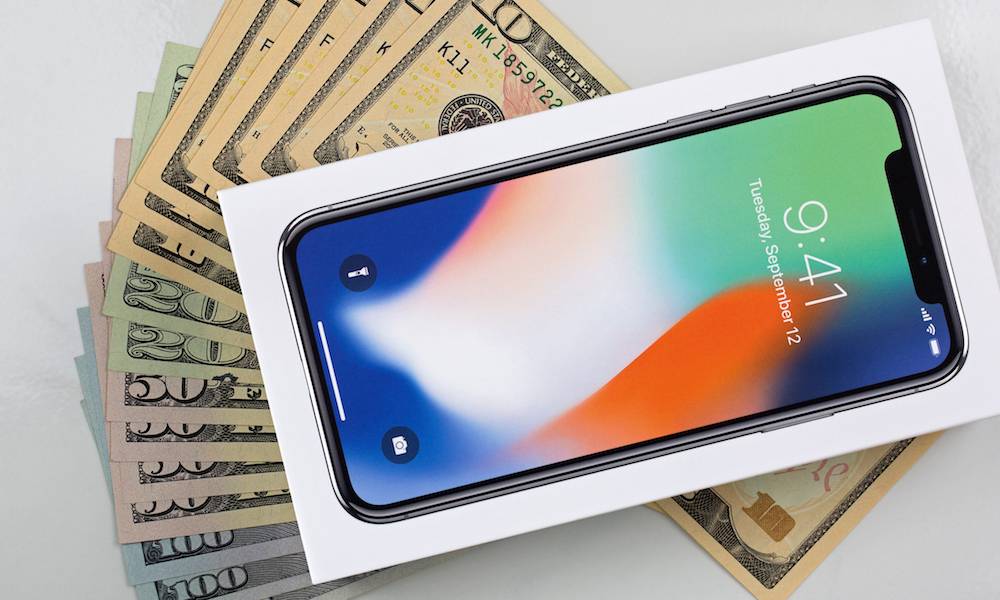Apple Mulling iPhone 17 Price Hikes
 Sasimoto / Shutterstock
Sasimoto / Shutterstock
Toggle Dark Mode
While Apple has managed to hold the line on iPhone prices so far, there’s every reason to believe that price hikes are just a matter of time. At the very least, costs related to building, producing, and shipping this year’s iPhone 17 lineup into the tariff-laden US could start to cut deeper into the company’s profit margins.
The Trump administration’s tariff policies have been a rollercoaster for everyone, leaving uncertainty lurking around every corner. Apple has been caught up in some of this on-again-off-again cycle. In March, Apple flew planeloads of iPhones into the US to beat the first big round of “retaliatory” tariffs that took effect in early April. This let it weather the storm without raising prices or eating tariff costs.
By mid-April, the iPhone got a respite from tariffs when the Trump administration exempted “smartphones, computers and other electronics” from the bulk of its tariffs on China. Those exceptions applied to all electronics in those categories, but they also covered nearly everything Apple makes (AirPods being the notable exception to this exception).
There were indications that Apple CEO Tim Cook’s “very good relationship” with Trump helped Apple avoid the tariffs — and at least one Democrat senator is questioning that — but the reprieve isn’t expected to last long, as President Trump and Commerce Secretary Howard Lutnick said the administration’s goal hasn’t changed; it expects Apple to build iPhones in America, and the delayed tariffs are merely to offer more time to adjust to that new reality.
This means it’s likely that new tariffs will be in place by September when Apple plans to release its new iPhone 17 lineup. It’s been unclear how Apple plans to handle this, but now The Wall Street Journal reports that the company is indeed considering charging more for the iPhone 17 — but it also wants to steer clear of pointing to tariffs as the reason.
“The company is determined to avoid any scenario in which it appears to attribute price increases to U.S. tariffs on goods from China, where most Apple devices are assembled,” the WSJ’s Rolfe Winkler and Yang Jie reported, citing people familiar with the matter.
Instead, Apple will try to point to “new features and design changes” to justify the higher prices. While the iPhone 17 Pro models are expected to feature a new aesthetic, those changes will likely only be skin-deep; however, Apple also has a new “iPhone 17 Air” in the works that could shake things up.
Apple could also replay the storage capacity card that it used to sneak up the price of the iPhone 15 Pro Max in 2023 when it dropped the 128 GB model from the lineup. That technically wasn’t a price increase, as the 256 GB iPhone 15 Pro Max still sold for the same $1,199 as all prior 256 GB models going back to the iPhone 12 Pro Max. However, it was still effectively a price hike as it increased the cost of entry for that model by $100 by eliminating the lower-cost option.

Memory is relatively cheap, especially at the scale of Apple’s supply chain. Bumping all iPhone 17 models to start at 256 GB would be one way of raising-prices-without-raising-prices.
Apple could also somewhat correctly point to the fact that it hasn’t raised the price of the iPhone in nearly a decade, even amid inflation. After all, the iPhone X debuted at $999 in 2017, which is the same price the base iPhone 16 Pro sells for today, with twice the storage and significantly more capabilities compared to its eight-year-old ancestor.
There’s been a bit more unusual price jostling among the standard models. For six generations, from the 2011 iPhone 4S to the 2016 iPhone 7, the starting price was $649. That jumped to $699 for the iPhone 8 in 2017, then $749 for the 2019 iPhone XR, and then back down to $699 for the iPhone 11. The iPhone 12 mini then complicated matters by occupying the $699 price point, which pushed the standard iPhone 12 up to $799, where the base model has remained ever since.
Inflation alone would make the $999 iPhone X cost around $1,300 in today’s dollars. Of course, technology becomes outdated much faster than the rate of inflation, but it’s still remarkable that Apple manages to continually add new features to its iPhones without raising prices even slightly.
Sadly, this could be the year that comes to an end. Tariffs are undoubtedly going to eat into Apple’s bottom line. Still, it’s also very reluctant to point to that as the reason after Amazon was pilloried by the White House for committing a “hostile act” when a report surfaced that it might show the impact of tariffs to its shoppers. Cook wants to stay on Trump’s good side, but this could also spell bad news for folks in countries that aren’t directly impacted by US tariffs. Even though Apple won’t pay any more to ship iPhones to other countries, such as Canada and the UK, raising prices only in the United States will still make it readily apparent that tariffs are the reason.
Apple is working on diversifying its supply chain in hopes of moving US iPhone production to India, where the tariffs are significantly lower. However, that won’t happen overnight, and certainly not in time for this year’s iPhone 17 launch.
“By the end of 2026 or the beginning of 2027, we are optimistic that India will be capable of meeting both the U.S. and India’s demand, TechInsights analyst Abhilash Kumar told the WSJ, but even then, “China will still be important” for sourcing components.
Even that’s an optimistic view, and other analysts suggest that it will be very challenging for Apple to reach the kind of production volume in India that it needs to meet US iPhone demand.








